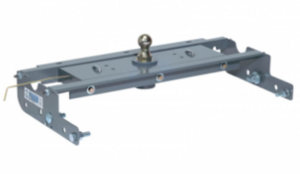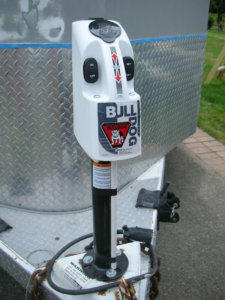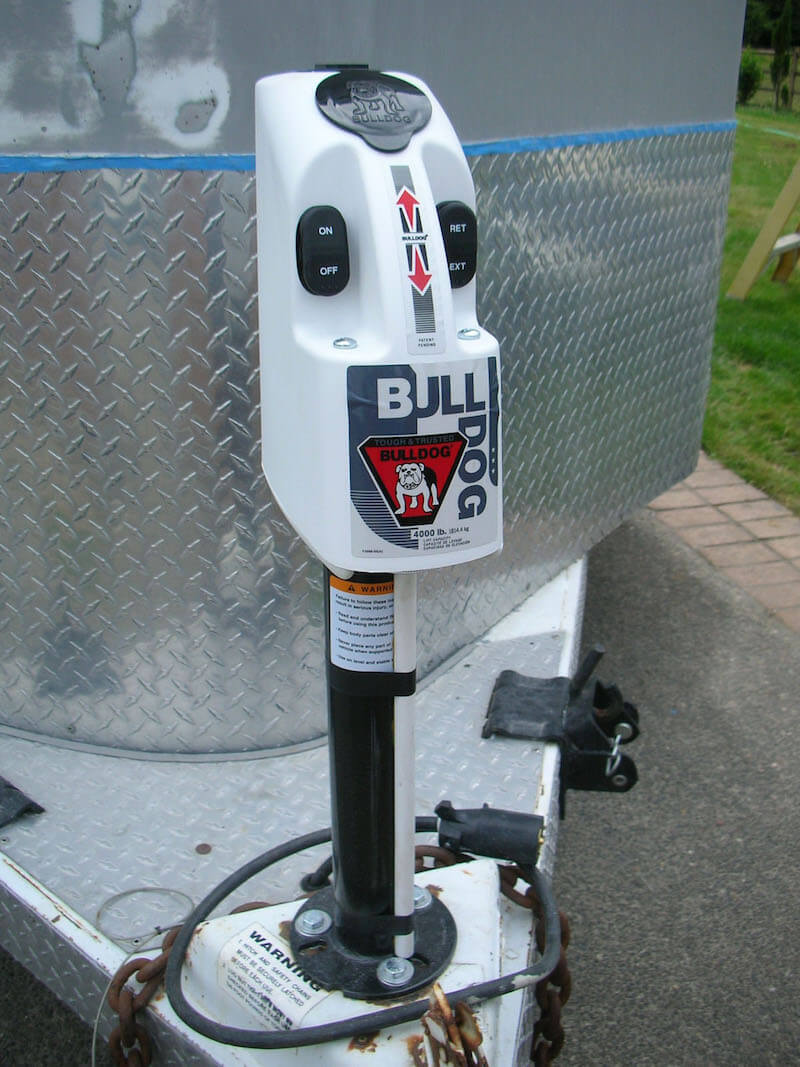Taking the Mystery Out of Connecting the Trailer to the Tow Vehicle
By Leigh Goodison Grieve
At the front end of every trailer are a hitch and a jack. There are a variety of hitches for bumper pull trailers, such as the A-frame, which drops directly over the ball hitch, and locks by way of a lever; and the collar lock, which opens like a clamshell, with a collar that slides up and is locked in place with a pin.
Hitches can be changed according to preference but require welding and possibly expensive modifications. After years of use hitches and receivers can wear out and become dangerous. If the trailer seems to jerk and make a ‘thump’ when moving forward or stopping, there is now ‘slop’ in the receiver and/or the hitch that could result in the hitch coming off the ball. These should be carefully measured by a professional using a micrometer caliper to determine if either should be replaced.
It is extremely important always to use the correct size ball for the hitch, but if you tow other trailers with different sized couplers, you may wish to buy a multiple ball mount type of receiver to accommodate both sizes. It is important to also have the mounting system that is usually bolted to the tow vehicle checked for loose bolts that holds them to the framework.

The hidden hitch for gooseneck trailers is popular because it folds over in the truck bed when not being used. Installation involves cutting into the bed of the truck, then bolting the associated hardware and framework into the chassis of the vehicle. As this is getting dangerously close to fuel lines and wiring, you should have a professional familiar with their proper installation install them.
Trailer jacks are usually the crank system type, but older trailers may have a ratchet style with grease-covered open teeth. These can slip and cause injuries. The size of jack should be a weight appropriate to the size of the trailer, i.e., a trailer rated at 7000 GVWR should have a tongue jack with a minimum 5000 lb capacity. When not in use a ‘foot’ or a wheel can be inserted at the bottom of the jack. In either case, whenever the trailer is not going to be used, the wheels should be chocked prior to removing it from the tow vehicle.

Electric jacks are available for both bumper pull and gooseneck trailers. These receive their power when they are hooked up to a tow vehicle, however, a fully charged auxiliary battery can be installed should the tow vehicle battery fail. They are convenient, though considerably more expensive.
Torsion bars, or load distribution bars, come in different weight ratings and are bolted to the tongue of the trailer. Their purpose is to take the weight off the rear bumper or hitch receiver of the tow vehicle and transfer it forward towards the front axle to evenly distribute the load. These are useful if the tow vehicle is a little on the light side. They are adjustable and help stabilize the trailer.
Safety chains are required on all trailers. The tensile strength of safety chains should be double that of the GVWR of the trailer. The end connectors should be the mouse-clip style or screw on, but not just a simple open hook as these can bounce off. As an added safety measure, chains need to be crossed underneath the tongue of the trailer, which will cradle the receiver should it come off the hitch.
Tip of the month: Avoid using grease when lubricating the ball hitch, as this will only get all over your hands and clothes. Do not use WD-40, which is a solvent, not a lubricant. Instead use a dry Lithium-based aerosol lubricant, which goes on wet and dries, and prevents friction and build-up.
Leigh Goodison Grieve is a freelance writer and editor, whose work has appeared in Western Horseman and Northwest Family Magazine among others. She is also co-owner of Horse Trailer Restoration, LLC, located in Battle Ground, WA, where she and her partner David Bodin restore, repair and maintain horse trailers. “The Secret Lives of Horse Trailers” will be released on DVD this summer. For more information visit www.handyrider.com*
*This link was not available at the time this article was added to the website in 2018.
Published September 2011 Issue

The Northwest Horse Source is an independently owned and operated print and online magazine for horse owners and enthusiasts of all breeds and disciplines in the Pacific Northwest. Our contemporary editorial columns are predominantly written by experts in the region, covering the care, training, keeping and enjoyment of horses, with an eye to the specific concerns in our region.






